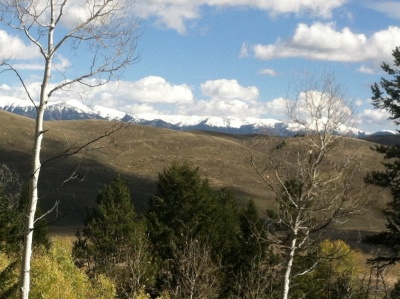Plan for proposed expansion of Smoky Canyon Mine available for review
Organization:
BLM Office:
Media Contact:
SODA SPRINGS, Idaho – The Bureau of Land Management Idaho Falls District and Caribou-Targhee National Forest today released a draft environmental impact statement analyzing different alternatives for expanding the phosphate mine at Smoky Canyon, east of Soda Springs. The agencies are seeking public input to ensure all aspects of the proposed mining and reclamation plan have been thoroughly analyzed.
In keeping with the Administration’s priorities, this proposal would sustainably develop the nation’s natural resources in order to promote local economies by providing opportunities for high paying jobs. If approved, the East Smoky Panel Mine Project would sustain 626 jobs for an additional three years at the existing Smoky Canyon Mine and Don Plant processing facility, generating approximately $180 million per year in associated salaries, along with 1,326 indirect jobs in the region.
J.R. Simplot Company proposed expanding the Smoky Canyon Mine into the East Smoky Panel by developing a single linear open pit in seven sequential phases, enabling the use of waste rock to backfill previously mined portions of the pit. This design is intended to reduce certain impacts associated with the mining process.
In addition to the pit and mining roads, new disturbance would include topsoil stockpiles, reclamation material borrow areas, stormwater ponds and ditches, and a possible dewatering pipeline. Two existing power transmission lines that cross the proposed project area would be rerouted around the proposed open pit area. Much of the infrastructure needed for the expansion already exists to service other phases of the Smoky Canyon Mine.
The BLM and the USFS will make separate but coordinated decisions related to the proposed project. BLM decisions will approve, approve with modifications, or deny the Mine and Reclamation Plan; recommend whether or not to add acreage to an existing lease; and approve or deny a modification to the existing B-Panel Mine Plan.
The USFS will make recommendations to the BLM concerning surface management and mitigation on leased lands within the Caribou-Targhee National Forest, determine whether to issue Special Use Authorizations for off-lease activities, and approve or deny a forest plan amendment to accommodate a re-route of an existing utility corridor around the southern portion of the proposed pit.
Public meetings will be held from 5-7 p.m. at the following locations:
Afton Civic Center, 150 S. Washington Street, Afton, Wyoming 83110; November 13, 2018
BLM Pocatello Field Office, 4350 Cliffs Drive, Pocatello, Idaho 83204; November 14, 2018
An electronic copy of the Draft EIS is available on the BLM Land Use Planning and NEPA Register at https://go.usa.gov/xnYTG or the CTNF Current and Recent Projects at http://www.fs.usda.gov/projects/ctnf/landmanagement/projects. To ensure comments will be considered, the Agencies must receive written comments on the East Smoky Panel Mine Project Draft EIS by December 26, 2018.
Before including your phone number, e-mail address, or other personal identifying information in your comment, you should be aware that your entire comment – including your personal identifying information – may be made publicly available at any time. While you can ask us in your comment to withhold your personal identifying information from public review, we cannot guarantee that we will be able to do so.
For further information contact Kyle Free, Bureau of Land Management, Pocatello Field Office, phone (208) 478-6352; email: [email protected].

The BLM manages about 245 million acres of public land located primarily in 12 western states, including Alaska, on behalf of the American people. The BLM also administers 700 million acres of sub-surface mineral estate throughout the nation. Our mission is to sustain the health, diversity, and productivity of America’s public lands for the use and enjoyment of present and future generations.
